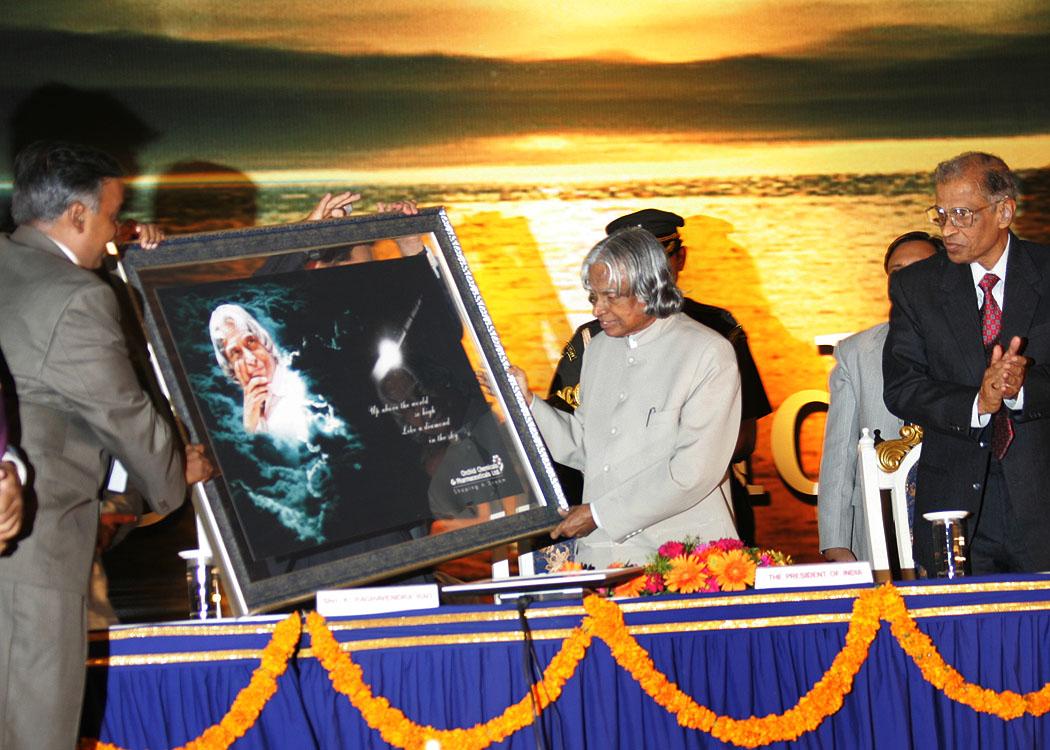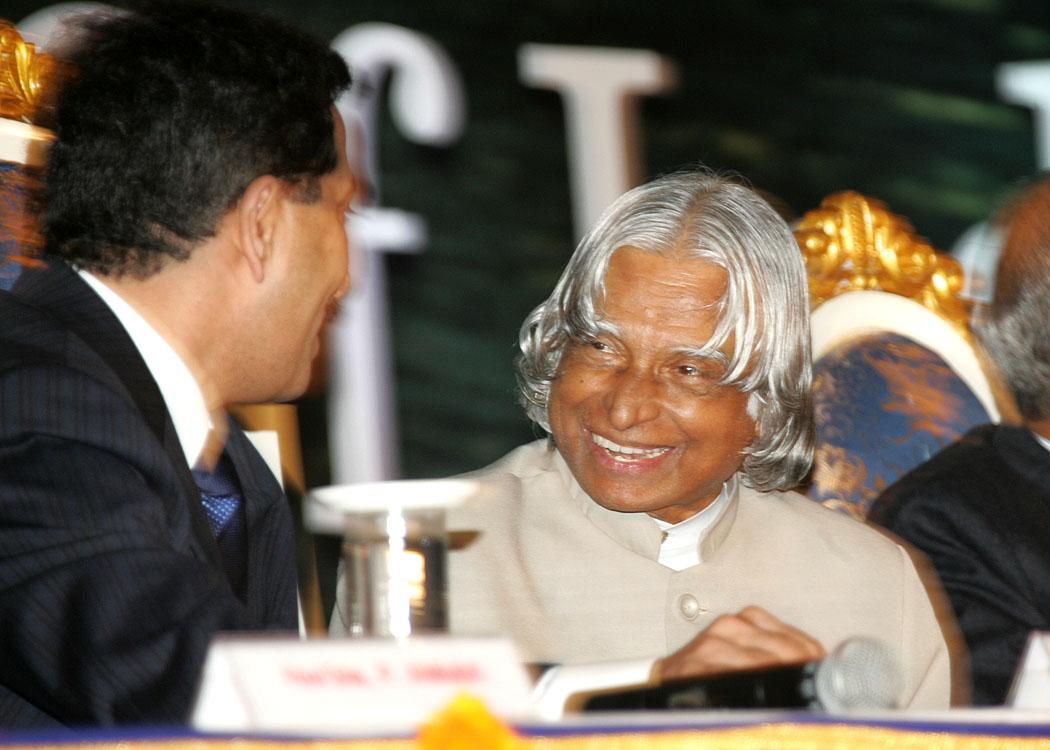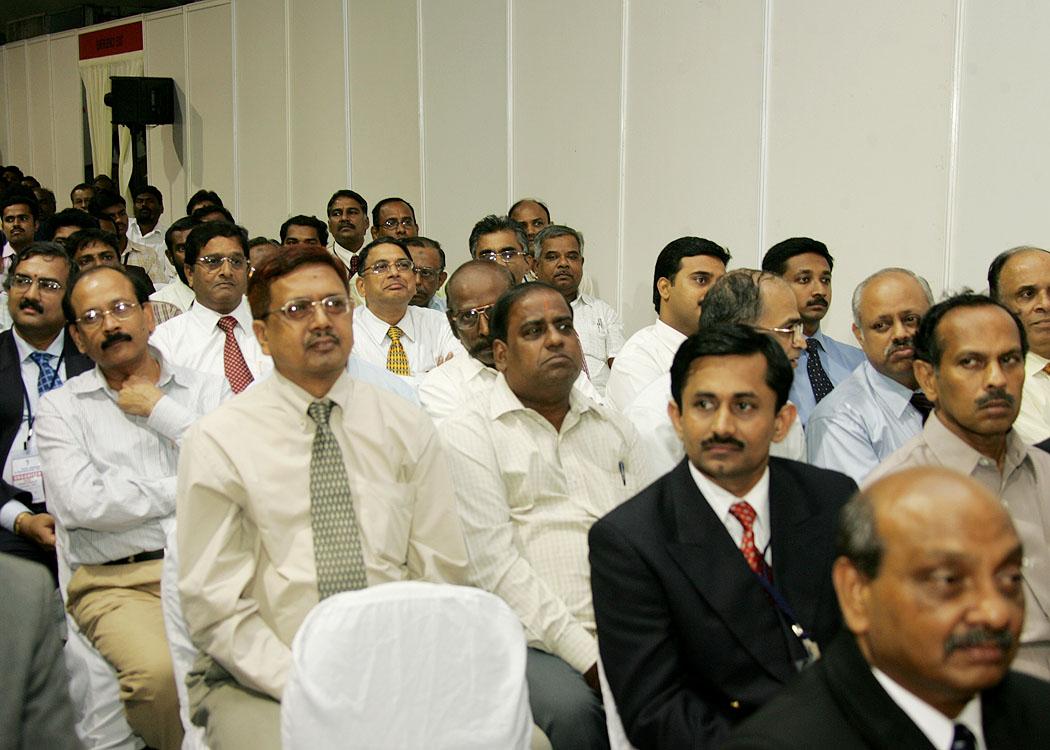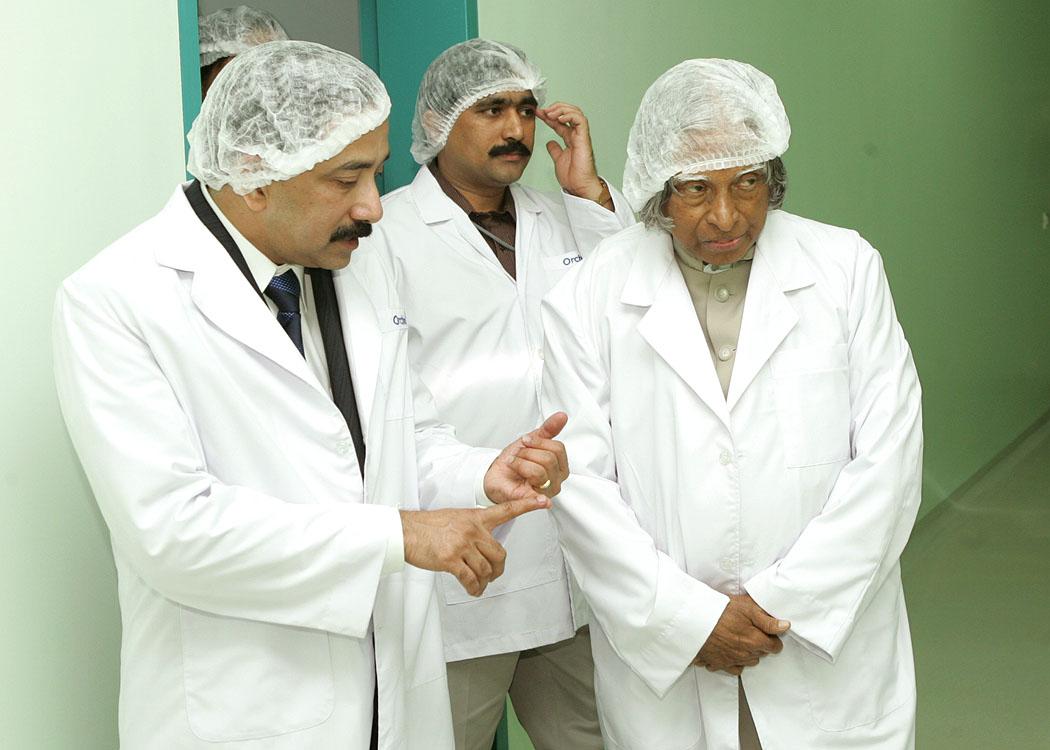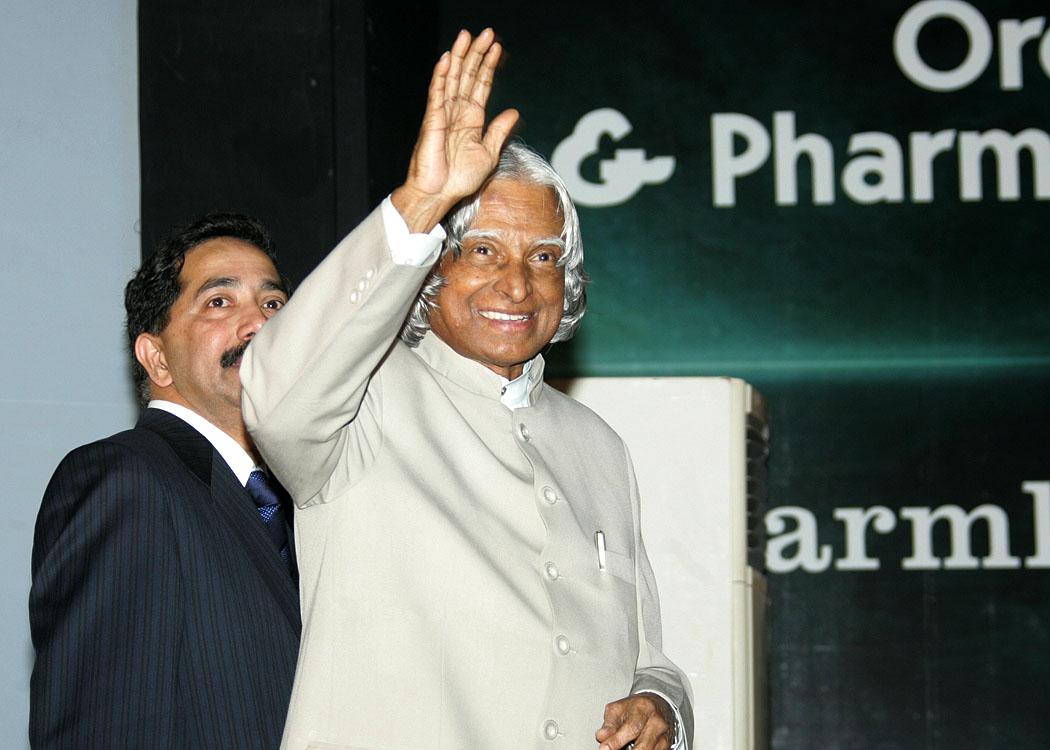Address And Interaction With The Scientists And Staff Of Orchid Chemicals And Pharmaceuticals Ltd. Irungattukkottai, Sriperumbudur, Chennai
Chennai : 01-12-2005
Research areas for Pharma Industries
I am delighted to be in the Orchids Formulation Complex and interact with the Scientists and technologists. My greetings to the scientists, Technologists, industrialists and distinguished guests.
With Orchid Chemicals experience in the field of providing healthcare solutions particularly in the area of anti-infective therapies, Cardiovascular, and neurological treatment and anti-diabetic therapies and nutra-ceuticals products, the Formulation Complex will facilitate Orchid Chemicals to become a world class Pharma company covering the entire value chain from discovery to delivery. I understand that Orchids is well known for the production of antibiotic more particularly "Cephalosporins". I would like to talk on the topic Research areas for Pharma Industries.
Convergence of Technologies
The technologies are converging together to provide a quality of service (QOS) with the reduced infrastructure setup. The information technology and communication technology have already converged leading to Information and Communication Technology (ICT). Information Technology combined with bio-technology has led to bio-informatics. Now, Nano-technology is knocking at our doors. It is the field of the future that will replace microelectronics and many fields with tremendous application potential in the areas of medicine, electronics and material science. When Nano technology and ICT meet, integrated silicon electronics, photonics is born and it can be said that material convergence may happen. With material convergence and biotechnology linked, a new science called Intelligent Bioscience will born which leads to a disease free, happy and more intelligent human habitat with longevity and high human capabilities. Convergence of bio-nano-info technologies can lead to the development of nano robots. Nano robots when they are injected on a patient, my expert friends say, it will deliver the treatment exclusively in the diseased area and then the nano-robot gets digested as it is DNA based product. I am sure this will be of interest to scientist of Orchid chemicals.
Molecule to drug
It is time that we develop a molecule to drug in the country. Scientific manpower is available in the country, but what we need is, to organize ourselves to attain global standards which are essential if we are to develop a product that is internationally approved. This can be done by obtaining approvals, creating fast decision making health councils in partnership with pharmaceutical industries in India and abroad to develop the process of converting of a molecule to drug. As this involves different technologists to work together for pre-clinicals, Phase 1 and Phase 2 clinical trials, namely pharmacologists, Bio-informatic scientists etc we need to develop skills of working together so that all the necessary questions in this regard are answered. Economics, time frame for development and risk of failures are high. A molecule can fail at the fag end of the process. This may be the major reason why our industry is not venturing in this conversion.
However, in the present scene of globalization, and the west looking towards cutting the costs of production without compromising on quality, India with all its thrust in Biotechnology, streamlining of procedural methodologies in obtaining permissions can help in developing the products rapidly, rather than getting lost due to regulatory formalities. Although, the governmental agencies are working in this direction, industries are yet not convinced of such an action, especially in Biotechnology. Our Pharma industry should have a specific aim to produce value added drugs from the molecule and become internationally competitive. I am sure this will be possible for Orchid Chemicals with the state-of-the-art facilities established now.
Law of development
Last two years, I was studying the development patterns and the dynamics of connectivity between nations, especially in trade and business. As you all know the world has few developed countries and many developing countries. What is the dynamics between them and what connects them? Developed country has to market their products in a competitive way to different countries to remain as developed country. The developing country to get transformed into developed country; they too have to market their products to other countries in a competitive way. Competitiveness has three dimensions: quality of the product, cost effectiveness and supply in time. Indeed this dynamics of competitiveness in marketing of products by developing and developed countries is called the law of development.
India is today a developing country and we have a vision to transform India into a developed nation by 2020 using technology as a tool. With the growing economy and strong internal market, India is destined to make competitive products using technological innovations. Particularly Pharma industries with intensified R&D efforts, will definitely be able to produce competitive new drugs. Of course the Pharma Vision 2020 aims at 75 bn dollar business volume against the present Pharma business of 6 bn dollars. In respect of Orchid Chemicals you should aim for becoming a one billion dollar company very soon. It looks as though it is long way to go but already we have in front of us tremendous growth demonstrated by the ICT area.
The science of proteomics and gene chip
India missed the great opportunity in partnering the human genome project and thereby lost the utility of tremendous data. I suggest the Indian biomedical community to take the initiative to become a working partner in the proteomics project of gene characterization. Proteomics is the study of all the proteins expressed by the genome of a cell. It is the logical extension of genomics. Proteomics helps to understand the basic biological processes critical to normal cellular functions as well as the development of diseases. It identifies the essential components of these processes and exploits these components as targets in the development of new methods to prevent or treat diseases. The national programme on proteomics has to be accelerated with partnership from industries and R & D laboratories. I would suggest that this should be pursued as a mission mode project. The proteomics resulting into a gene chip can become the future diagnosis and treatment regime for many diseases.
Information Technology
Information Technology has become very relevant to areas like pharmaceutical research because of the enormous amount of data which has to be mined and analyzed to arrive at definite conclusions. The results of proteomics programme will unravel the genomic mystery leading to the bio-medical community to create a new evolutionary future for the human race. The amount of data processing required is so huge and specialized, that the new branch of 'bio-informatics' has emerged. As the volume of data generated grows, so does the demand for faster data processing technologies. Thus, to arrive at some destination in the area of 'bio-informatics', it is very necessary to deploy powerful information and communication technologies so as to be able to get a hold on gene sequences, expressions, protein structure delineation and population genetics etc.
We have Biotechnology and Information Technology. When they converge, we get Bio-informatics and the important science of proteomics emerged has revolutionized the drug design. Now with the emergence of Nano-technology, we have an excellent opportunity to be a global leader in the development of drug delivery systems and medical diagnostics.
Computational biology and drug design
In 2004 when I visited Hyderabad, I launched the Bio-Suite which is a state-of-the-art software package that caters to all aspects of computational biology from genomics to structure-based drug design. It incorporates the latest publicly known algorithms, as chosen by a panel of academic partners, and has been coded entirely by the TCS team, using the best software engineering practices. It can be used by academic and R&D institutions, small/medium and large biotechnology companies. I would suggest the researchers of Orchids to examine the possibility of using this bio-suite developed by TCS in collaboration with CSIR and academic institutions, for cost effective drug development.
Nano-bio technologies
Now we believe that Nanotechnology is the new technology that is knocking at our doors which has wider applications. It will be the central focus for many technologies to converge and open a large number of applications. Further, this technology will have a large domestic market potential leading to a robust economy. Nano-bio medical sensors will play a major role in glucose detection and endoscopic implants. Nano-technology application to drug delivery system will revolutionize the health-care to a large extent which can be studied by the scientists of this new research Centre.
Nano-bio chip
I met Prof. Vijay K Varadan of Pennsylvania State University, US. He shared his experience on the possible line of treatment for Parkinsons disease and Epilepsy. The primary symptoms in Parkinson's Disease, as you all are aware, are tremor or trembling in hands, arms, legs, jaw and face, rigidity or stiffness of the limbs, slowness of movement and impaired balance. Prof Varadan has devised a wireless system for monitoring and control of Parkinson disease. The system consists of an implantable nano-bio chip in the head region for generating a pulse to the nerve system; controlled either by a modified pacemaker or smart hat. Passive polymer based gyro sensor, is implanted in the tremor location. The sensor gets power from the Pacemaker and the Pacemaker then reads the tremor motion. The Pacemaker then generates pulse in the implanted device in the head to control the tremor. This appears to be a promising line of treatment for such diseases. Prof. Varadan also has reported that a few patients affected by Parkinson disease had a full recovery. This is the promising area of research in which some of the researchers of this Centre can concentrate.
Conclusion
The research and drug design, development and acceptance for introduction is indeed a challenging mission. Molecule to drug is the business of strong minds with the capacity to take calculated risks. In this connection, I recall the principle taught by my Guru Prof Satish Dhawan, "If one takes challenging tasks, problems will always occur. But problems should not become masters of the doers. Instead the problem has to be defeated and we should succeed." I am sure Scientists of Orchids Chemicals and Pharmaceuticals will have an indomitable spirit to encounter problems and succeed in its innovation, business and marketing.
Eradication of liver diseases, controlling cardiovascular diseases and diabetes, preventing spread of HIV by developing anti HIV vaccine, controlling allergy and inflammatory disorders by multiple technologies and practices and creation of competitive Pharma businesses - all need one important element, apart from other resources. That is creative leadership in health care. Who are the creative leaders? What are the qualities of a creative leader? The creative leadership is exercising the task to change the traditional role from commander to coach, from manager to mentor, from director to delegator and from one who demands respect to one who facilitates self respect. Higher the proportion of creative leaders with vision in the health care area, higher the potential for successes in research and discovery of healthcare products, leading towards a healthy and wealthy India.
My best wishes to the Scientists, Technologists and the Pharma Industry captains in their mission of providing cost effective world class medical solution to the ailments of the common man of our country.
May God Bless You.

